Maximize Your PC Performance: Essential Tips & Tricks
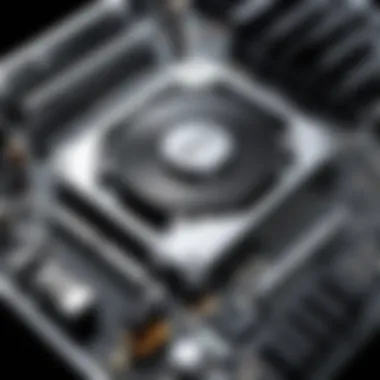
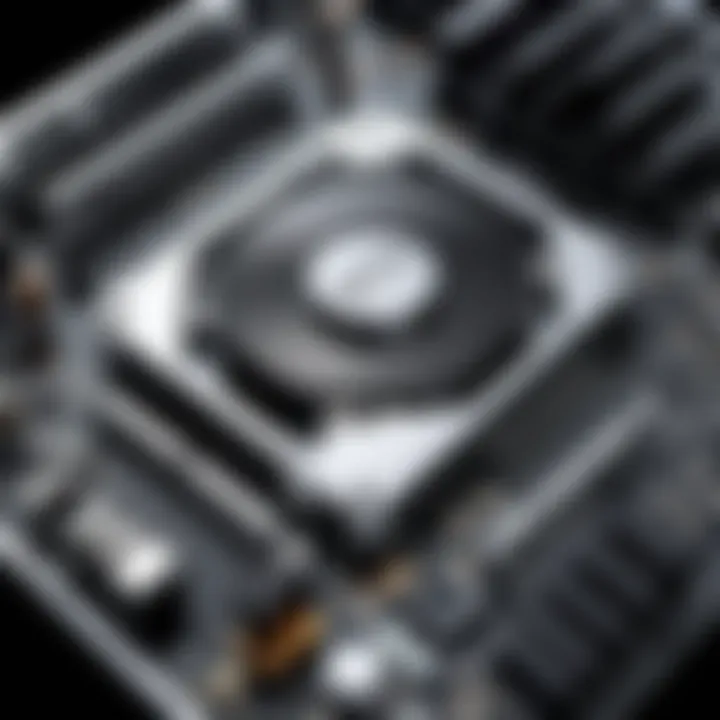
Intro
In today's digital landscape, optimizing a personal computer's performance is more crucial than ever. As applications demand more resources and the need for speed intensifies, understanding how to enhance your PC's capabilities can lead to a far more efficient and enjoyable computing experience. This guide aims to dissect various strategies that can elevate the performance of your machine, from upgrading hardware components to adjusting software settings.
Furthermore, it tackles the significance of routine maintenance practices that, though often overlooked, play a pivotal role in sustaining optimal performance.
Key Features
In this section, we will cover essential features that contribute to an optimized PC. Understanding the design, build quality, and performance metrics of your computer is fundamental in identifying areas for enhancement.
Design and Build Quality
The design and build quality of a PC can directly affect its performance. For instance, adequate cooling systems are critical in maintaining temperature during high workloads. A well-designed case not only offers aesthetic appeal but also enhances airflow, thus promoting cooler operation. Solid-state drives (SSDs) manufactured for durability can significantly outperform traditional hard drives, both in speed and reliability. Investing in a quality build may yield long-term benefits that outweigh initial costs.
Display and Performance
The interaction between the display and system performance can often be a bottleneck. A high-refresh-rate monitor (for example, 144Hz) can make a significant difference in gaming and video editing tasks, where fast response times are essential. Coupled with a graphics card capable of sustaining these refresh rates, one can experience a smoother computing journey.
"A seamless display can often mask underlying performance issues, yet improving the display system can unleash the full power of your hardware."
Product Specifications
Let’s take a closer look at the vital specifications of your PC. Understanding the specifications helps in identifying suitable upgrades or adjustments.
Technical Specifications
Focusing on the technical specifications, such as the CPU’s processing power and ram capacity, can be a game changer. A modern CPU, like AMD Ryzen 9 or Intel Core i9, paired with at least 16GB of RAM, ensures that your PC remains responsive during intense tasks. Prioritizing the latest specifications will directly correlate to better performance.
Compatibility and Connectivity
Moreover, assess the compatibility of hardware components to ensure they work seamlessly together. Connection ports, like USB-C and Thunderbolt, can offer faster data transfer rates, positively impacting productivity. Compatibility extends beyond hardware; software compatibility with the operating system should also be examined to avoid performance hindrances.
This narrative sets the stage for further exploration into concrete steps for optimization across various dimensions. By delineating the significance of each aspect, individuals can better appreciate how to apply these insights into their unique setups.
Understanding PC Performance
Understanding PC performance is essential for anyone who relies on their computer for work or leisure. The speed and efficiency at which a PC operates directly impact the overall user experience. When a computer works effectively, tasks are completed quicker, applications run smoothly, and users can multitask without frustrating delays. In this guide, we will explore critical elements influencing PC performance and offer insights on enhancing it.
One important aspect of understanding PC performance is knowing its components. The performance often hinges on three primary elements: the processor, memory, and storage. The processor, or CPU, processes instructions from software. Memory, or RAM, temporarily stores data for quick access. Storage devices, like hard drives or SSDs, hold programs and files permanently. Each of these components plays a significant role in how well a computer performs.
Considerations on underlying architecture and technology are also vital. Processors have multiple cores that allow for parallel task processing, while improving memory can enhance how quickly your computer accesses frequently used files. Additionally, storage type can determine how quickly data is read or written. Modern SSDs offer much faster performance compared to traditional HDDs.
In summary, grasping the fundamentals of PC performance enables users to make informed decisions about upgrades and maintenance. This knowledge fosters a proactive approach, allowing for strategies that maximize both speed and efficiency.
Evaluating Your Current Setup
Assessing your current setup is crucial when optimizing PC performance. The evaluation helps in identifying bottlenecks and understanding what upgrades or tweaks can deliver the best results. Failing to evaluate can lead to wasted investment in unnecessary hardware or software changes, ultimately hindering performance improvements. Before proceeding with any upgrades, it is essential to have a clear picture of your existing configuration. This includes knowing your hardware specifications, operating system version, and baseline performance metrics.
System Requirements for Performance
Examining system requirements helps ascertain if your hardware meets the needs of modern applications and tasks. Each software program, especially resource-intensive ones like video games and design tools, has specific minimum and recommended requirements. Understanding these requirements informs your decision on necessary upgrades.
Here are some key components to consider:
- Processor (CPU): The heart of the PC. Ensure your CPU can handle the workload, especially for demanding applications.
- Memory (RAM): Insufficient RAM can slow performance dramatically. Check how much is needed for optimal operation.
- Storage: SSDs generally offer better performance than traditional hard drives. If your storage device is old or slow, consider an upgrade.
- Graphics Card (GPU): For gamers or those working with graphic design software, a capable GPU is vital for performance.
Having favorable specifications according to the software requirements can facilitate smoother workflows and reduce frustration.
Assessing Hardware Limitations
Assessing hardware limitations involves determining the areas where your current setup falls short. This step is critical before pursuing any upgrades. Knowing these limits can guide you on what to prioritize based on your specific use cases. Here are some factors to think about:
- Age of Components: Older hardware may not support newer technologies, which can limit functionality and performance.
- Thermal Throttling: This occurs when components overheat and reduce performance to cool down. Understand your cooling solution capabilities to avoid this issue.
- Power Supply: Make sure your power supply can handle additional upgrades. An inadequate power supply might not support high-demand components.
Regular assessments of your hardware may reveal issues that are not immediately apparent. This proactive approach can save both time and money and ensure you target the right system enhancements.
"Maintaining a balance between hardware capabilities and software demands is key to achieving optimal performance."
By evaluating your current setup with these considerations, you can make informed decisions that align with your performance goals.
Hardware Upgrades


Hardware upgrades play a pivotal role in enhancing the overall performance of your personal computer. As software applications become more demanding and require greater processing power, upgrading hardware components can substantially improve system speed, efficiency, and multitasking capabilities. It is crucial to assess the current limitations of your PC, identify areas for enhancement, and select appropriate upgrades to achieve favorable outcomes. Whether it is augmenting memory capacity, transitioning to a solid-state drive, or upgrading your graphics card, the right modifications can breathe new life into an aging machine. Here are some essential upgrades that can significantly contribute to optimizing your PC's performance.
Increasing RAM Capacity
Increasing RAM capacity is one of the most effective ways to enhance your PC's performance. Random Access Memory (RAM) serves as a temporary storage space that allows your computer to access and process data quickly. If your system frequently runs slow when multitasking or struggles with resource-heavy applications, it might be due to insufficient RAM.
- Benefits of Extra RAM: More memory allows your PC to handle more applications simultaneously, reducing lag and boosting overall responsiveness. For gamers and professionals who use demanding software, increasing RAM can significantly improve performance.
- Considerations for Upgrading: When planning to install additional RAM, check your motherboard specifications. Ensure compatibility with existing memory modules in terms of speed, type (such as DDR4), and maximum capacity supported. Upgrading to at least 16GB is recommend for modern applications.
- Installation Process: While installing RAM can be relatively straightforward, caution is needed. Always power down your PC, unplug it, and follow anti-static procedures to avoid damage during installation.
Upgrading to an SSD
Transitioning from a traditional hard disk drive (HDD) to a solid-state drive (SSD) can revolutionize your PC's performance. SSDs utilize flash memory technology, offering faster read and write speeds compared to HDDs.
- Advantages of SSDs: The primary benefit of SSDs is their ability to significantly reduce boot and loading times. Applications launch almost instantly, and file transfers occur much faster. In many cases, replacing an HDD with an SSD can result in a performance increase that feels like a new computer.
- Capacity Considerations: While SSDs typically cost more per gigabyte than HDDs, their price is continuously decreasing. You can purchase SSDs ranging from 250GB to several terabytes. Select a capacity based on your storage needs, keeping in mind actual space versus total advertised space.
- How to Upgrade: Cloning your existing hard drive to an SSD can be straightforward using specific software tools. After cloning, you can either retain your HDD for extra storage or remove it entirely.
Graphics Card Enhancement
Upgrading the graphics card can be particularly important for anyone engaging in gaming, video editing, or graphic design. A powerful GPU enhances graphical performance, enabling smoother rendering and high frame rates in demanding applications.
- Why Upgrade: For gamers, a robust graphics card directly impacts the gaming experience. High resolutions and complex graphics require a capable GPU to deliver enjoyable gameplay. Additionally, if your current graphics card struggles with 3D rendering or video playback, an upgrade may eliminate frustrating performance issues.
- Factors to Consider: Ensure the new graphics card is compatible with your power supply and motherboard. Also, take note of the space available in your case. High-performance graphics cards often require more power and can be bulkier than standard models.
- Installation Tips: Installation involves removing the old GPU and inserting the new one into the PCI Express slot. Ensure to connect any necessary power cables and uninstall old drivers to avoid conflicts with the new card.
Upgrading hardware is not only an investment in performance but also a way to extend the lifespan of your PC. Assessing your computing needs should guide your choices in upgrades.
Software Optimization
Software optimization plays a crucial role in enhancing your PC's performance. Even with the most robust hardware, the operating system and the installed applications can bottleneck performance if they are not properly configured. By focusing on software optimization, users can improve responsiveness, decrease load times, and ensure that the operating environment is as efficient as possible. This area encompasses several key practices that can be easily implemented by tech-savvy individuals.
Operating System Tweaks
Tweaking the operating system can lead to significant performance boosts. One important aspect is adjusting the visual effects to improve speed. Windows and macOS both come with animations and visual enhancements that can slow down system performance. By disabling some of these effects, you can free up valuable system resources.
Another effective tweak is optimizing system settings for best performance. In Windows, for example, you can go to the System Properties and change the settings to prioritize performance over appearance. Mac users can adjust energy settings for maximizing performance as well.
Consider also enabling 'Game Mode' in Windows 10 or higher when playing games or using resource-heavy applications. This setting allocates more resources to these applications, improving their performance during use.
Disabling Unnecessary Startup Programs
Startup programs can significantly delay boot times and consume resources unnecessarily. Identifying and disabling these programs can lead to a much faster startup and a more responsive system. In Windows, this can be done through the Task Manager. Look for the 'Startup' tab, where you can see programs that launch at boot.
For macOS users, the process involves navigating to System Preferences, then Users & Groups, and checking the Login Items. Simply uncheck or remove any non-essential applications that do not need to start with your system. This practice not only enhances speed but also allows users to focus resources on the applications that matter most.
Regular Software Updates
Keeping software up to date is a paramount component of software optimization. Updates often include critical security patches and performance improvements. Not updating can leave systems vulnerable to threats, while also missing out on enhancements that developers implement to improve efficiency.
For Windows, utilize Windows Update to keep the operating system and applications current. On macOS, staying updated with the App Store will ensure you have the latest versions of apps and system improvements. Users should also consider third-party applications that may require manual updates; programs like CCleaner can help manage and automate this process.
"Regularly installing software updates can dramatically improve your system security and performance."
Maintenance Practices
Maintaining optimal performance of your personal computer requires regular maintenance practices. These practices not only improve the computer’s efficiency but also extend its lifespan. Regular upkeep prevents potential hardware failures and keeps software running smoothly. Adopting good maintenance habits is essential for tech-savvy individuals who rely heavily on their systems for various tasks. Below, we explore some critical maintenance procedures.
Disk Cleanup Procedures
Disk cleanup is an essential procedure designed to free up valuable disk space and enhance system performance. As files accumulate over time, unnecessary data may slow down the computer. Temporary files, system files, and internet cache can consume significant storage. To perform a disk cleanup:
- Open 'Disk Cleanup' on your Windows PC.
- Select the drive you wish to clean, usually C:.
- The tool will calculate how much space you can free up.
- Choose the types of files to delete, such as temporary internet files or recycle bin contents.
- Click 'OK' to initiate the cleanup process.
By removing clutter, you can improve access speeds and overall system responsiveness. Additionally, running disk cleanup on a regular basis can prevent data fragmentation, keeping your files organized and easy to retrieve.
Defragmenting Your Hard Drive
Defragmentation consolidates fragmented files on your hard drive, making it faster and smoother in operation. Fragmentation occurs when files are broken up into smaller pieces and scattered across the disk. This can significantly slow down data retrieval, especially on traditional hard drives. For systems utilizing HDDs, defragmentation can be beneficial:
- Open 'Defragment and Optimize Drives' on Windows.
- Select the hard drive to defragment.
- Click on 'Optimize' to start the defragmentation.
"Defragmenting your hard drive can lead to noticeable speed improvements in file access and application loading times."
Scheduled defragmentation processes ensure that your disk remains optimized without user intervention. SSD users do not need to defragment since these drives work differently and do not benefit in the same way from this process.
Antivirus and Malware Scans
Regular antivirus and malware scans are vital for maintaining a secure and efficient computing environment. Malware can severely hinder performance and lead to data loss. Here’s how to ensure your system remains protected:
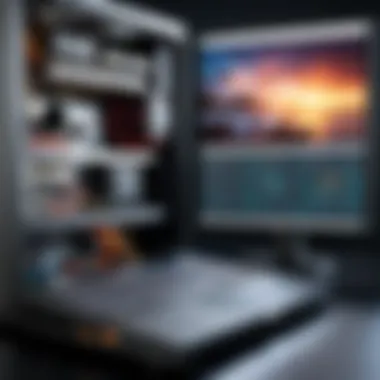

- Choose a reputable antivirus program like Norton, McAfee, or Bitdefender.
- Keep the software updated to defend against new threats.
- Run periodic full scans, ideally once a week. This will detect and remove any infected files.
Utilizing a firewall in conjunction with ongoing scans enhances your protection. It’s crucial to stay vigilant against threats that typically arise from downloads and online activities. Neglecting this aspect of maintenance can lead to decreased system performance and potential data breaches.
Managing Your System Resources
Managing your system resources is a critical aspect of optimizing PC performance. Understanding how your computer uses its resources can lead to significant improvements in speed and efficiency. Often, users overlook the many tools and settings available within their operating system that can either hinder or enhance performance.
Efficient resource management affects various aspects of your system, from the processing power utilized to the memory allocations during program execution. This section not only highlights the importance of resource management but also provides practical tools and techniques to help you harness your PC's full potential.
Understanding Task Manager Insights
The Task Manager is an essential tool for any PC user. It provides real-time information about what is running on your computer. By accessing the Task Manager, you can see which applications and processes are consuming the most system resources, including CPU, memory, disk, and network usage. Understanding these metrics can help you identify bottlenecks and resolve issues that slow down your computer.
Some key features of the Task Manager include:
- Processes Tab: Displays all running applications and processes, allowing users to quickly assess which ones may be consuming excess resources.
- Performance Tab: Offers a graphical overview of CPU, memory, disk, and network usage in real time. This information can help identify if your system is under stress during certain operations.
- Startup Tab: Lists applications that launch during boot-up. Disabling unnecessary items here can improve boot time and overall performance.
To open the Task Manager, simply right-click the taskbar and select "Task Manager" or press . Familiarizing yourself with these insights can empower you to make informed decisions about which applications to close or uninstall.
Monitoring Resource Usage
Maintaining an ongoing check on your resource usage can significantly aid in long-term performance optimization. There are various methods and tools available to help you with this, including built-in operating system functions and third-party software.
System Resource Monitor: Windows provides a built-in Resource Monitor tool that offers more detailed insights than Task Manager. This feature allows users to see resource usage in greater detail, identifying not only how much each resource is being used but also how they interact with each other.
Third-party Tools: Several applications can help monitor system resources. Programs like MSI Afterburner and HWMonitor provide advanced metrics and temperature readings, which can be critical for gamers and professionals running heavy applications.
Considerations for Monitoring:
- Identify Patterns: Regularly check your resource usage to spot patterns. If a particular application spikes resource usage at specific times, consider evaluating its necessity.
- Resource Management: Use monitoring tools to identify background apps that you may not need. Continuous monitoring of these points will help maintain an optimized system.
"Regular monitoring of your PC's resource allocation can prevent slowdowns and crashes that often occur from resource overload."
By understanding and managing your system resources effectively, you can maintain an optimal computing environment. This proactive approach not only enhances your PC performance but also extends the lifespan of your hardware.
Advanced Techniques
In the quest for superior PC performance, one must consider advanced techniques that go beyond standard optimization methods. These strategies are tailored for users who wish to push their systems to the limits, ensuring maximum efficiency and speed. The significance of advanced techniques lies in their potential to unlock hidden capabilities of the hardware and software, underscoring the user's ability to take control of their computing experience.
When engaging in advanced techniques, it is essential to understand the balance between risk and reward. Proper execution can lead to substantial performance gains, while neglecting important safety measures can result in hardware damage or system instability. Therefore, grasping the fundamentals of these techniques is crucial.
Overclocking Fundamentals
Overclocking is the process of increasing the operating speed of a PC's components, typically the CPU or GPU, beyond the manufacturer's specifications. This is done to enhance performance, especially in demanding applications like gaming and video editing. However, it comes with inherent risks, including overheating and reduced lifespan of components due to increased voltage and temperatures.
Key benefits of overclocking include:
- Increased processing speed, leading to faster task execution.
- Improved frame rates and overall performance in graphics-intensive tasks.
- Enhanced multi-tasking capabilities, allowing for seamless running of multiple applications.
Considerations for effective overclocking are as follows:
- Cooling Solutions: Proper cooling is essential. Utilizing advanced cooling methods such as liquid cooling can help manage the additional heat generated.
- Power Supply: Ensure that the power supply can handle the increased demands of overclocked components.
- Testing Stability: Use benchmarking tools to test the system's stability after overclocking. Applications such as Prime95 and AIDA64 can help assess performance under stress conditions.
Utilizing Performance Monitoring Tools
Performance monitoring tools are invaluable in understanding how well your PC operates under various conditions. These tools provide insights into resource usage, allowing for informed adjustments to optimize performance further.
Benefits of using performance monitoring tools include:
- Identifying Bottlenecks: Discovering which components limit overall performance allows targeted upgrades or optimizations.
- Tracking Resource Usage: Monitoring CPU, GPU, and memory usage helps in assessing system health under different workloads.
- Temperature Monitoring: Keeping an eye on component temperatures is vital for preventing overheating, which can lead to severe hardware failures.
Popular tools include:
- HWMonitor: Offers real-time monitoring of various hardware parameters including temperatures, voltages and fan speeds.
- MSI Afterburner: Primarily used for graphics cards, it allows for monitoring temperatures and adjusting clock speeds.
- CPUID’s CPU-Z: A great tool for gathering detailed information about the CPU and memory specifications.
“Using performance monitoring tools gives you a deeper understanding of your PC's capabilities, helping to make educated decisions about upgrades and optimizations.”
The Role of Up-to-Date Drivers
Keeping your device drivers up to date is crucial for any computer user aiming for optimized PC performance. Drivers serve as a bridge between the hardware and the software of your system. They make sure that all the components of the PC work together seamlessly. Outdated drivers can lead to various issues, including performance bottlenecks, crashes, and even hardware failures. Thus, the role of up-to-date drivers cannot be overstated in the context of enhancing both speed and stability.
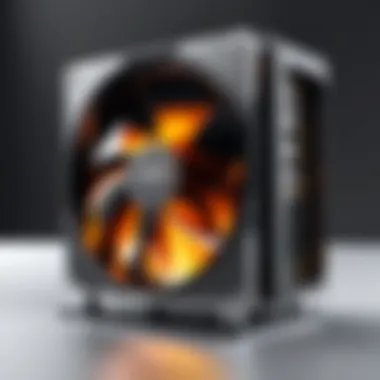
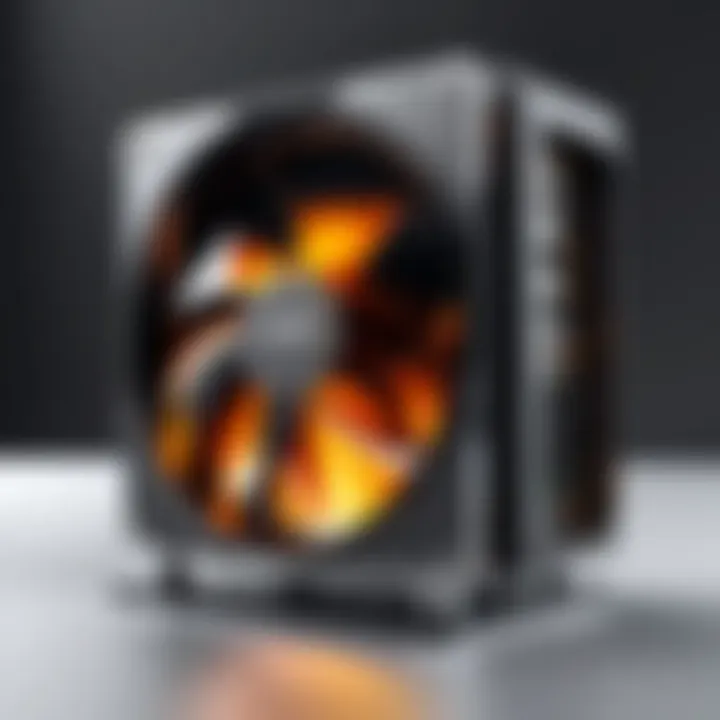
Understanding Device Drivers
Device drivers are specialized software programs that allow your operating system to communicate with hardware components. Each device, be it a graphic card, printer, or even a hard disk, requires a specific driver to function properly. The primary function of a device driver is to translate the OS commands into specific instructions that the hardware can understand.
When you install new hardware or update your operating system, often, the system will automatically try to load the necessary drivers. But sometimes, this does not happen, leading to suboptimal performance. Device drivers need regular updates due to:
- Hardware Enhancements: Manufacturers may introduce improvements to their hardware that require new drivers for optimal performance.
- Bug Fixes: Just like any software, drivers can have bugs. Updates fix these issues and stabilize performance.
- Compatibility Issues: New software applications might rely on updated drivers to function effectively.
Checking for Driver Updates
To ensure that your device drivers are current, regular checks are essential. Here are some practical steps you can take:
- Use Built-in OS Tools: Most operating systems, such as Windows, have built-in features to search for and install driver updates automatically. For example, in Windows, you can use to check for updates on individual drivers.
- Visit Manufacturer Websites: For critical components like the graphics card, it's wise to visit the manufacturer's site, such as NVIDIA or AMD. They often provide the latest drivers with enhanced features and improvements.
- Driver Update Software: Several dedicated programs can scan your PC and notify you of outdated drivers. Examples include Driver Booster and Driver Easy. These tools may save time and automate the process.
- Manual Checks: If you suspect a specific device is causing performance issues, a manual check on that driver may be necessary. You can right-click on the device in Device Manager, select Properties, and see if there’s an option to update the driver.
- Set Reminders: Always be aware of new updates released by your hardware manufacturers. Often, setting a reminder every few months can be beneficial.
"Keeping device drivers up to date is not merely a technical recommendation; it is a necessity for achieving a smooth and efficient computing experience."
By keeping your drivers in check, you help prevent performance issues that come with outdated software. Aligment between hardware and software optimally requires constant driver updates.
The Impact of Cooling Solutions
Effective heat management is crucial for maintaining optimal PC performance. Overheating can lead to throttling, where the CPU and GPU reduce their operational speeds to avoid damage. This can substantially degrade user experience, particularly during demanding tasks such as gaming or video editing. Therefore, understanding the importance of cooling solutions can aid in maximizing the efficiency and longevity of computer components.
Heat Management Importance
Heat generation is an inherent byproduct of computing processes. As components like the CPU and GPU work harder, they tend to produce more heat. This not only affects the individual performance of each component but can also compromise the entire system’s stability. Keeping temperatures within a safe range ensures that hardware operates at its optimal capacity.
If your system frequently crashes or experiences performance drops, it may be due to inadequate cooling. Regular monitoring of temperatures can help you identify potential overheating issues early.
"Maintaining proper thermal management can frequently be the difference between smooth operation and frustrating slowdowns."
It's essential to ensure that your cases allow for adequate airflow. This helps dissipate heat more effectively, contributing to overall system performance. Consider cleaning dust buildup in your system, as this can obstruct airflow and trap heat.
Types of Cooling Systems
When it comes to PC cooling solutions, several types are available, catering to a variety of needs and preferences. Understanding these options can help you determine the best cooling method for your setup.
- Air Cooling: This is the most common and accessible option. It typically involves heatsinks and one or more fans to dissipate heat. Air coolers come in different sizes and capacities, making them suitable for both compact and larger cases.
- Liquid Cooling: Liquid cooling systems use liquid coolant to transfer heat away from components. This method is often more efficient than air cooling, particularly for high-performance systems. Liquid cooling can also reduce noise levels, since fans can operate at lower speeds. However, it requires careful installation and maintenance to prevent leaks.
- Passive Cooling: This type of cooling relies solely on natural convection to dissipate heat. Passive cooling components usually have large heatsinks and no fans. While suitable for low-power systems, it may not effectively cool high-performance hardware under heavy loads.
Networking Considerations
In today’s world, where virtually every task relies on an internet connection, the role of networking in PC performance cannot be understated. An efficient network setup significantly influences both the speed and reliability of your online activities, whether it be gaming, streaming, or downloading large files. This segment unpacks the elements that contribute to optimizing your networking capabilities, focusing not only on the hardware involved but also on the best practices that can enhance your experience.
Connection Speeds and Latency
Connection speed and latency are cornerstone metrics of network performance. Connection speed refers to the rate at which data is transferred over your network. This affects how quickly you can download files or stream videos. On the other hand, latency measures the delay before a transfer of data begins following an instruction. A low latency is critical in applications that require real-time responses, such as online gaming or video conferencing.
Several factors influence both connection speed and latency, including but not limited to:
- Bandwidth available: Higher bandwidth provides more room for data to travel.
- Network congestion: Too many connected devices can slow down the connection.
- Physical distance from router: The further away, the weaker the signal.
Therefore, it’s vital to understand these factors when assessing your PC’s performance related to network connectivity.
Router and Modem Optimization
Optimizing your router and modem can lead to immediate improvements in your network’s performance. Here are some strategies worth considering for better efficiency:
- Positioning your router correctly: Place your router in a central location free of obstructions to enhance signal coverage.
- Regular firmware updates: Keeping your router’s firmware updated ensures you have the latest security enhancements and performance tweaks.
- Changing the channel: Wireless routers operate on channels that can become congested. Switching to a less crowded channel can improve speeds.
- Quality of Service (QoS) settings: Adjust these settings to prioritize important traffic, such as video calls or gaming applications.
"An optimized network setup not only enhances your online experience but also paves the way for future technology integrations."
Final Thoughts
In the realm of computer performance optimization, the Final Thoughts section serves as a crucial summation of the insights and strategies discussed throughout the article. This section encapsulates the overarching importance of the measures that can bolster your computer's efficiency and speed. A well-optimized PC not only enhances user experience but also increases the longevity of the hardware. As systems evolve, understanding how to maintain and enhance their capabilities becomes essential for keeping up with demanding software and applications.
Summarizing Key Strategies
To ensure that your PC remains efficient, summarizing key strategies is vital. Here are several strategies to keep in mind:
- Regular Maintenance: Schedule routine checks for disk cleanup, defragmentation, and malware scans. These help prevent clutter and keep your system running smoothly.
- Hardware Upgrades: Consider investing in additional RAM or switching to an SSD. These upgrades can dramatically improve boot times and overall performance.
- Software Optimization: Remove unnecessary programs running on startup. Keeping your software updated also ensures that you have the latest security patches and features.
By embracing these strategies, you not only improve performance but also boost productivity, making everyday computing tasks more efficient.
Looking Forward to Future Upgrades
Future advancements in technology are inevitable, and preparing for these changes is essential. As new applications and operating systems become available, the demand for increased computing power will continue.
- Evaluate New Technologies: Keep an eye on advancements in components such as graphics cards, CPUs, and storage solutions. Being informed will assist you in making the right upgrade choices at the right time.
- Plan for Compatibility: When considering hardware upgrades, ensure compatibility with existing hardware to avoid unnecessary future costs.
- Invest in Quality: Selecting high-quality components can lead to better performance and a more reliable system in the long term.
Being proactive about future enhancements ensures that your PC remains competitive and capable of handling modern demands, which ultimately enhances your overall computing experience.



